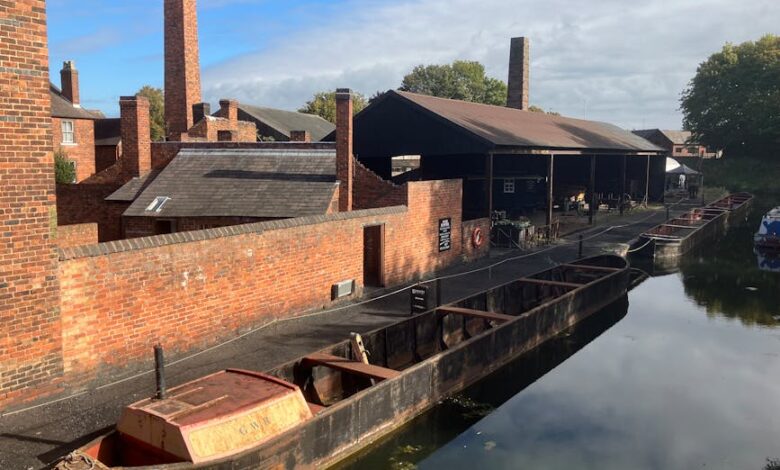The Evolving Landscape of Data Access Management

In our increasingly data-driven world, the ability to access information swiftly, securely, and transparently is paramount. Yet, for many organizations, managing data access remains a complex, often fragmented challenge. Balancing the need for rapid insight with stringent security and compliance requirements can feel like navigating a digital minefield. This is precisely the critical juncture where innovative thinking is not just beneficial, but essential for modern businesses.
Enter Dinesh Thangaraju, a data governance expert whose independent research is illuminating new pathways for organizations to master their data access strategies. His pioneering work is about more than just incremental improvements; it’s about a fundamental shift towards intelligent, automated, and accountable data access frameworks. Thangaraju’s insights are poised to redefine how enterprises interact with their most valuable asset: data.
The Evolving Landscape of Data Access Management
The sheer volume and velocity of data generated today are staggering. Cloud adoption, big data analytics, and distributed workforces have collectively amplified the complexities of managing who can access what, when, and why. Traditional data access controls, often reliant on manual processes and siloed systems, struggle to keep pace.
This struggle manifests in several critical pain points. Security vulnerabilities arise from over-provisioned permissions or “toxic combinations” of access rights. Compliance with regulations like GDPR, CCPA, and HIPAA becomes an ongoing headache, demanding meticulous audit trails and proof of access legitimacy. Furthermore, the slow pace of granting necessary data access can stifle innovation and hinder business agility, turning data from an asset into a bottleneck.
Organizations often find themselves in a reactive stance, trying to patch security holes or respond to audit findings rather than proactively building robust data access governance. This reactive approach is not sustainable in an era where data breaches can cripple businesses and regulatory fines are substantial. A new paradigm for secure transparent data access is urgently needed to move beyond these limitations and unlock data’s full potential.
Dinesh Thangaraju’s Vision: Next-Gen Data Access Innovations
Addressing these pervasive challenges, data governance expert Dinesh Thangaraju explores next-gen methods for secure, transparent data access. His research introduces access baselining, automation, data contracts, and lineage tracking—helping organizations cut excess permissions, enhance accountability, and improve compliance through analytics and AI-driven workflows. This comprehensive approach forms the cornerstone of his independent research and offers a strategic blueprint for the future of data management.
Let’s delve into the specific innovations championed by Dinesh Thangaraju:
Access Baselining: Defining the Gold Standard
Access baselining involves establishing a baseline of appropriate access for different roles and data types. It’s about understanding “normal” and identifying deviations. By systematically analyzing existing permissions against defined roles and responsibilities, organizations can quickly spot and eliminate excess permissions – those unnecessary access rights that are common sources of vulnerability. This proactive measure ensures that individuals only have the access they truly need, adhering to the principle of least privilege.
Automation: Powering Efficiency and Consistency
Manual data access request and approval processes are not only slow but also prone to human error. Thangaraju’s research emphasizes leveraging automation to streamline these workflows. By automating routine access grants, reviews, and revocations, organizations can significantly reduce operational overhead, ensure consistency in policy enforcement, and dramatically speed up the provision of data, thereby enhancing business agility and reducing friction for data consumers.
Data Contracts: Formalizing Data Relationships
Data contracts are essentially formal agreements between data producers and data consumers. They define the terms of data access, including what data is being shared, its format, quality expectations, and usage restrictions. These contracts foster a culture of transparent data access and accountability, ensuring that both parties understand their responsibilities. This innovation is crucial for distributed data environments and data mesh architectures, bringing clarity and governance to complex data ecosystems.
Lineage Tracking: The Full Story of Your Data
Understanding the complete journey of data—from its origin to its current location and every transformation along the way—is vital for compliance, auditing, and problem-solving. Lineage tracking provides this comprehensive historical record. Thangaraju highlights its importance in enhancing accountability, allowing organizations to trace any data access or modification back to its source, which is invaluable for regulatory reporting and forensic analysis following a security incident.
Collectively, these innovations by Dinesh Thangaraju offer a powerful framework. By integrating access baselining, automation, data contracts, and lineage tracking, organizations move beyond fragmented solutions to create a unified, intelligent system for secure transparent data access. The result is a robust infrastructure that not only mitigates risk but also empowers data-driven decision-making with confidence and integrity.
Implementing Intelligent Data Access: Bridging Theory and Reality
The theoretical underpinnings of Thangaraju’s research are compelling, but their true power lies in their practical application. Organizations looking to implement these next-gen data access methods can start by leveraging existing technologies and gradually integrating more advanced analytics and AI-driven workflows.
For instance, an initial step could involve conducting an access baselining exercise using current identity and access management (IAM) tools, combined with data cataloging solutions to map data to roles. This helps identify initial instances of excess permissions. As an organization matures, it can then introduce AI-driven analytics to continuously monitor access patterns, predict potential risks, and suggest optimal access policies, further refining its data governance strategy.
Imagine a global financial institution struggling with compliance across multiple jurisdictions. By adopting Thangaraju’s framework, they could use access baselining to define consistent, region-specific access policies. Automation would then ensure these policies are applied uniformly and efficiently, reducing manual errors. Data contracts would formalize data sharing between different departments, enhancing transparency and accountability, while lineage tracking would provide an immutable audit trail for every transaction, simplifying regulatory audits and demonstrating robust compliance.
These innovations aren’t just about security; they’re about enabling business. When data access is secure, transparent, and efficiently managed, data scientists can spend less time requesting permissions and more time extracting insights. Developers can integrate data into applications with greater confidence in its integrity and compliance. Ultimately, Thangaraju’s vision allows organizations to truly harness their data’s potential, driving innovation and maintaining competitive advantage in a complex digital landscape.
Conclusion
In a world where data is both an incredible opportunity and a significant responsibility, mastering data access is no longer optional. Dinesh Thangaraju’s independent research offers a crucial roadmap for organizations aiming to build robust, secure, and transparent data access frameworks. By embracing access baselining, automation, data contracts, and lineage tracking, businesses can move beyond the reactive struggle of traditional data management.
These next-gen methods, powered by analytics and AI-driven workflows, empower organizations to proactively cut excess permissions, enhance accountability, and significantly improve compliance. It’s a strategic shift that transforms data access from a potential vulnerability into a foundation for innovation and trust. Embrace these advancements to secure your data future and unlock unparalleled organizational intelligence.





